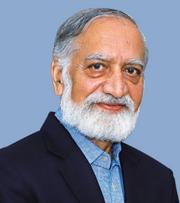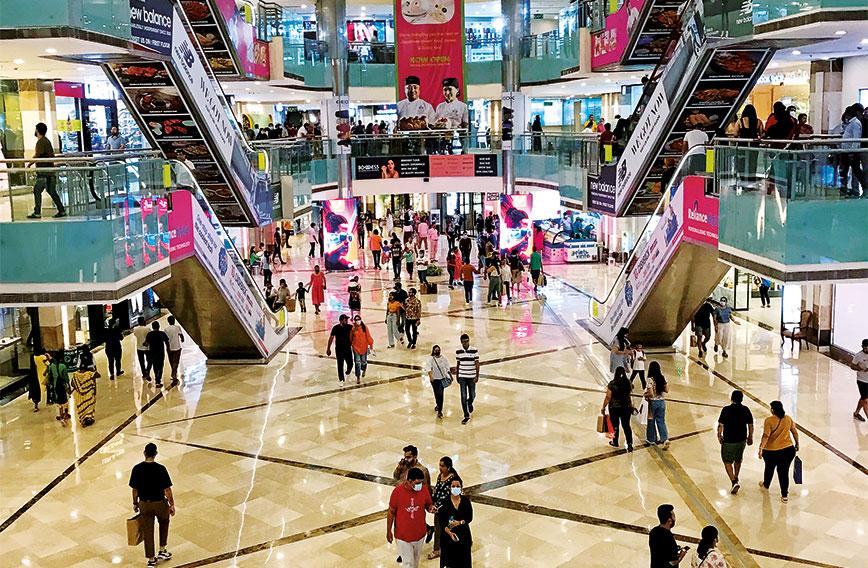
KIRAN KARNIK
The tagline of the rap song "Apna time aayega" (My time will come) from the recent Hindi film, The Gully Boys, could equally have been the refrain of India itself for many decades. A left-handed compliment is that India has for long been a country with great potential — and continues to be so.
We have, of course, moved far from the days of dire predictions of chaos, of a break-up, of ship-to-lip foreign foodgrains to stave off starvation, from the days of sending gold out to repay our debts to “India shining”. In the world’s mind, the Indian with the begging bowl has given way to one with a (computer) tablet in her hand.
From the heyday of the first dozen years of the new millennium, when India was increasingly the flavour of the decade, the country did stumble for a few years in the last part of the 2010s. And then Covid-19 hit the world. Everything — health, global trade, social relationships, jobs, economic growth — seemed to go for a toss. The country suffered grievously during the second wave. Its international image took a beating with photographs of corpses floating in the Ganga, cremations on the streets and chaos outside hospitals. Much of this was soon redeemed by a very successful vaccination programme. Yet, like “long Covid”, the economic impacts of the pandemic linger on.
Problems in China, disruption of supply chains, high interest rates, inflation, trade restrictions — together, they have given a jolt to the world economy. This has been further exacerbated by the war in Ukraine and the consequent sanctions. Supplies of foodgrains, fertilizers, oil and gas have all been affected, with developing countries bearing the brunt of the impact. India appears to be handling this successfully — just as it has skilfully navigated between the two warring blocks and charted its own course.
This and a confluence of other factors have positioned India well for comparatively strong economic growth. In fact, India is expected to be the star performer as the fastest growing major economy this year. In addition, India now presides over the G20, the forum of the world’s 20 biggest economies. Its firm independent stand in the Ukraine imbroglio, amidst many pressures, has won it wide respect in the “global South”. Also, in Russian eyes, it has further cemented a relationship with them despite the perceived closeness to the US and West. Geopolitically and economically, India is on the ascendant.
One result of India’s consistent economic growth — through various ups and downs — is that its cumulative impact is now becoming increasingly visible at the individual level, more so with the slower rate of population growth. At the same time, India’s large population translates into a large market, offering immense scope to both domestic and foreign companies.
A few numbers tell the story. PRICE, a research organization, estimates India’s middle class (those earning between `5 lakh and `30 lakh per annum) at 432 million, and over 700 million by 2030. The proportion of poor will go down from 14 percent to 5 percent. The fact that two-thirds of India is below 35 years is also important: it means energy, innovation and a willingness to buy now, pay later.
While a poor country pulling itself up by the bootstraps necessarily needs economic growth, this must take place in a manner that does not create its own problems — immediately, or for future generations. An appreciation of this has led to the concept of sustainable development, in which the natural environment is not to be despoiled in our haste for growth. Cutting trees for timber brings immediate income but may well cause floods, droughts or landslides next year. The human and even economic cost may well outweigh the income, as we have sadly seen in our country. Joshimath is but the most recent example. It is ironic that within weeks of the disaster, a sensible decision to limit the number of visitors to nearby shrines was opposed by some local vested interests.
Most people view sustainability only through the ecological lens. There is, however, also the issue of social sustainability. Here, there are serious concerns about the development model that the country has adopted. Inequity seems to be rising, almost in proportion to the number of billionaires. A larger share of the growth pie is being captured by those who are better off, even as the middle class grows. With rapidly rising aspirations fuelled by high media exposure, ostentatious displays of wealth, and want creation by marketeers, we may well be entering dangerous territory. An increase in their own income may no longer satisfy those who see a far larger jump in the prosperity of those around them. Jobless growth leading to unemployment and growing informalization (work with no security of tenure or social benefits) are adding to dissatisfaction, especially amongst the youth — always a volatile segment of the population.
Some studies (PRICE) do indicate trickle-down effects (share of bottom 20 percent in disposable income was 6.5 percent in 2016, 3 percent in 2021, 4.5 percent now), but other telling statistics indicate the top or luxury brands growing so much faster than the average in so many sectors. Moreover, signs of disparity are visible and felt in day-to-day life. Beyond a point, patience may wear thin, especially in urban environments.
Added to this is the social sustainability of fractious and divisive politics, supplemented by doses of violence. The discriminated, disadvantaged, and deprived may, at some point, revolt. Sustainability requires harmony, and we have too little of it.
Doubtless, key social safety nets like free grains, cash transfers to farmers, healthcare and insurance, subsidies and the like have been of immense value. MGNREGS too has played an important role (and it is high time to roll out its urban counterpart). Together, these have assuaged the poor, taking many beyond the poverty line. However, there is no equivalent balm yet for our frayed and further-fraying social fabric.
Yet, this could be India’s time. This decade will be decisive in laying the foundation for rapid growth and overall sustainable development. Will we grab the opportunity before the window closes? Watch this space. Or, as they say more colourfully in Bollywood, picture abhi baaki hai.
Kiran Karnik is a public policy analyst and author. His most recent book is ‘Decisive Decade: India 2030, Gazelle or Hippo’.
Comments
Currently there are no Comments. Be first to write a comment!




